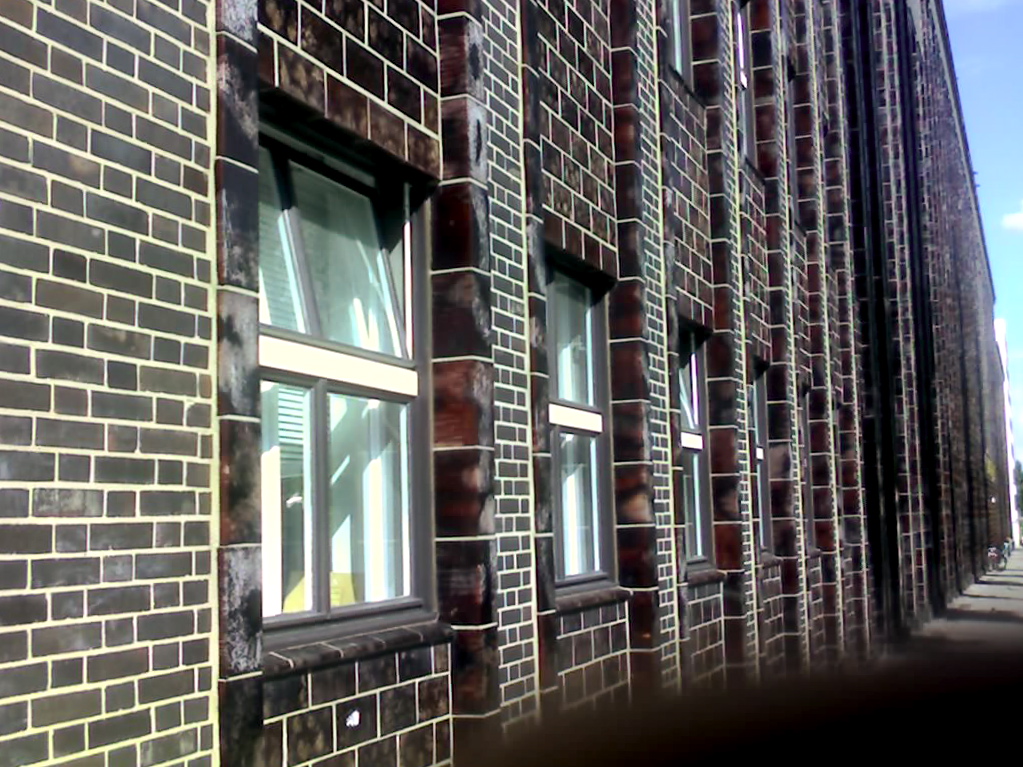- Haus des Rundfunks
The Haus des Rundfunks ("House of Broadcasting"), located in
Charlottenburg ,Berlin , is the oldest self contained broadcasting house in the world. It was designed byHans Poelzig in 1929 after winning a competition. The building contains three large broadcasting rooms located in the centre, shielded from street noise by the surrounding office wings. It is now used by the broadcasterRundfunk Berlin-Brandenburg and produces radio programs for the following channels: "radioBerlin", "Kulturradio", "Radiomultikulti" and "Inforadio". The building's broadcasting rooms are occasionally also used to host concerts.
caption=Haus des Rundfunks, June 2006
name=Haus des Rundfunks
location_town=Berlin
location_country=Germany
architect=Hans Poelzig
client=
engineer=
construction_start_date=1929
completion_date=1930
date_demolished=
cost=
structural_system=
style=|History
The building, designed by
Hans Poelzig with a plan shape of a rounded triangle, was constructed from 1929-1930 and inaugurated on22 January ,1933 . The large, central broadcasting room was first developed in 1933. On the22 March ,1935 the first regular television service in Germany was started there, but was moved to the nearbyTheodor-Heuss-Platz in 1937. The Haus des Rundfunks also had an important influence on the development ofStereophonic sound and its adoption to broadcasting.After the
Second World War , the building became something of an issue in theCold War . Though it lay in the British Sector of occupied Berlin, it was used until 1952 by the Russian occupation force'sBerliner Rundfunk . It was handed over to the Mayor of West-Berlin,Otto Suhr , on5 July ,1956 by the Soviet military command . After considerable renovation work, the Haus des Rundfunks was used from the end of 1957 as the home ofSender Freies Berlin s broadcasting programmes. On the1 May ,2003 , the Sender Freies Berlin merged into Rundfunk Berlin-Brandenburg.The Building
The Haus des Rundfunks was one of the first buildings in Europe solely dedicated to broadcasting, exceeded in age only by the
Münchner Funkhaus . It is thus especially noteworthy that the building still offers ideal conditions for broadcasting productions today. At the time, Hans Poelzig had almost no examples to emulate, but he developed ideas which are still valid today: the office and editorial rooms are located on the outer areas of the building and surround the three large studio complexes. The largest broadcasting room comprises the heart of the building, and aside from this there is also a smaller broadcasting room and an area forradio drama s which possesses a diversity of acoustic characteristics.Poelzig put a great deal of thought into the acoustics of the rooms. The chairs in the large broadcasting room were specially designed so that seats had the same sound-absorbing qualities whether they were occupied or not. In the smaller broadcasting room a hundred wall panels could be flipped. One side of the panels absorbed sound, the other reflected it. In this way very different reverberation effects could be created.
External links
* [http://www.berlin.de/tourismus/sehenswuerdigkeiten.en/00059.html House of Radio (Berlin sights)] . Retrieved June 21, 2006.
* [http://www.berlin.de/ba-charlottenburg-wilmersdorf/wissenswertes/lexikon/h_rundfunk.html Haus des Rundfunks] . Retrieved July 18, 2006.
Wikimedia Foundation. 2010.

